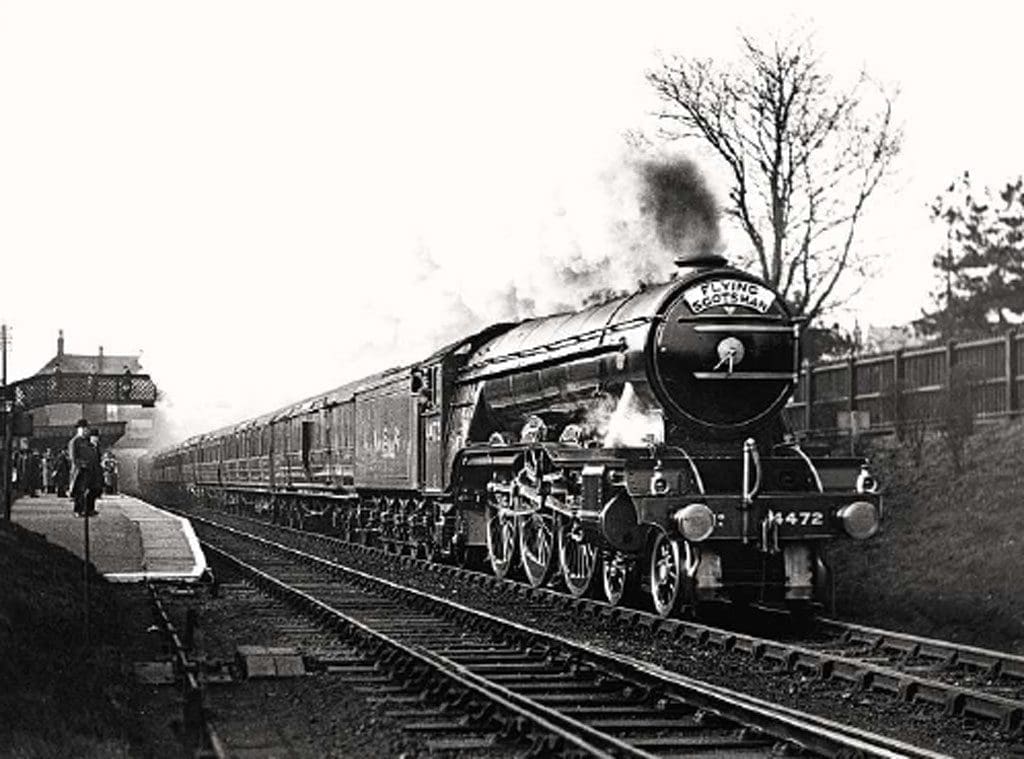
Flying Scotsman, when built, was the third of 79 LNER Gresley A1/A3 Pacifics. Designed by Gresley, it was built by the London & North Eastern Railway, who classified it as an A1, but why is it called a ‘Pacific’?
As steam locomotives grew in size, they were inevitably designed with more wheels, but not all were ‘driving’ wheels, ie directly powered by the cylinders.
In Rocket’s case, only the leading wheels are powered, so the wheel arrangement of the engine is described as an 0-2-2. The first digit is the leading (carrying) wheels, the middle one the driving (coupled) wheels, and the third the rear carrying wheels.
Enjoy more Heritage Railway Magazine reading every month.
Click here to subscribe & save.
The more driving wheels an engine has, the more power it is able to transmit to the track, but there are good reasons for not all of a locomotive’s wheels being powered. The rigid wheelbase can be unkind to the track, and there are more expensive bearings to maintain.
Eventually, locomotives of a certain wheel arrangement started to acquire nicknames. These clearly originated in North America, and tend to refer to the areas where a particular wheel arrangement found favour.

The 4-4-2 ‘Atlantic’ was built for speed on level track and was popular in the relatively flat states of the Eastern Seaboard. The 4-6-0 had more power but less speed and was useful in the Midwest, but its nickname, the ‘10-wheeler’, never caught on in Britain.
The 4-6-2 or ‘Pacific’ combined speed and power, useful on the West Coast, where hundreds of miles of level track could suddenly end with a ferocious gradient into the Sierra Nevada mountains.
This was nothing to the terrain encountered by lines such as the Great Northern Railroad, and nothing less than a massive 4-8-4 was necessary to shift tonnages across the Rockies. These acquired the name ‘Northern’ and were of the type that eventually found universal favour across the USA and Canada.
British express steam power consisted mainly of 4-4-0s, 4-4-2s and 4-6-0s, until the coming of the 4-6-2s in the early 1920s. Even the adoption of the transatlantic Atlantic and Pacific names as descriptions of the engine types probably owed a lot to East Coast Main Line (especially Great Northern Railway) marketing spin.
Few other railways even had Atlantics, let alone Pacifics, and ‘Pacific’ had much more public appeal and glamour than 4-6-2 could ever have.

Many of the larger wheel arrangements were rarely used in Britain and, in fact, several, such as 4-6-4, 2-8-2 and even 2-6-2, were seen almost exclusively in Gresley’s later designs.
The ‘Whyte’ system of wheel arrangements was not universal. France referred only to axles, so a 4-6-2 was a 231.
Turkey used driving axles and total axles, so a 2-8-0 was a 450. Initially, diesels used the Whyte system, but as powered bogies became the norm, Bo-Bo and Co-Co came in to use; B being a two-axle bogie, and C three-axle, the o denoting both being powered. An A1A-A1A has two three-axle bogies but with the centre one of each unpowered.
Fancy reading more? Grab a copy of Flying Scotsman: The legend Lives on for just 99p from PocketMags. Offer ends February 27 at 23:59 pm.




